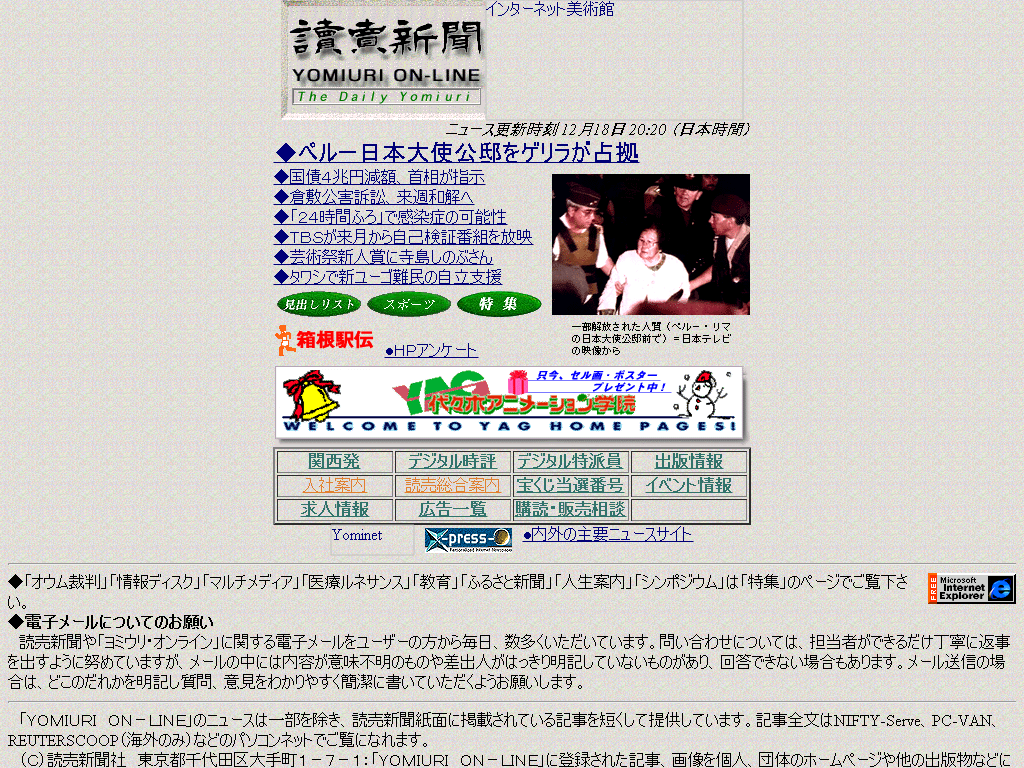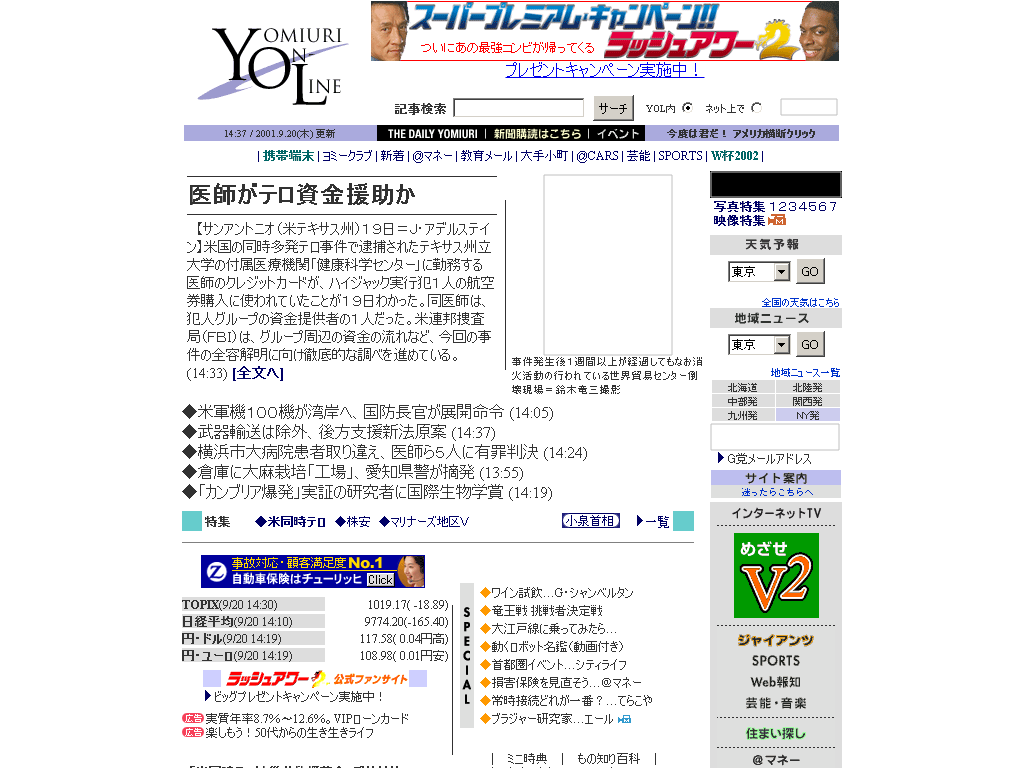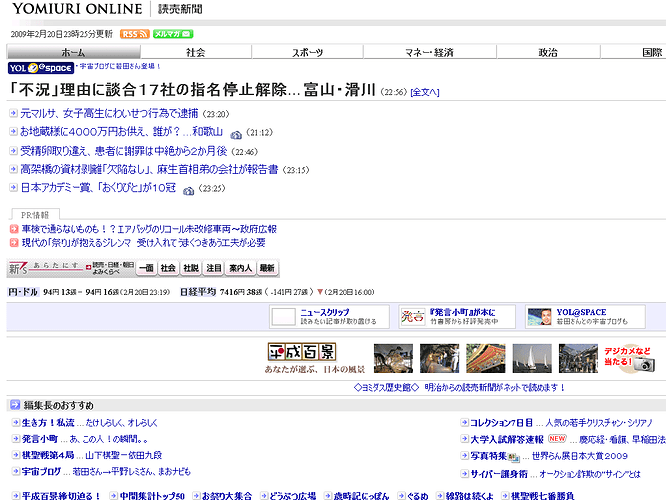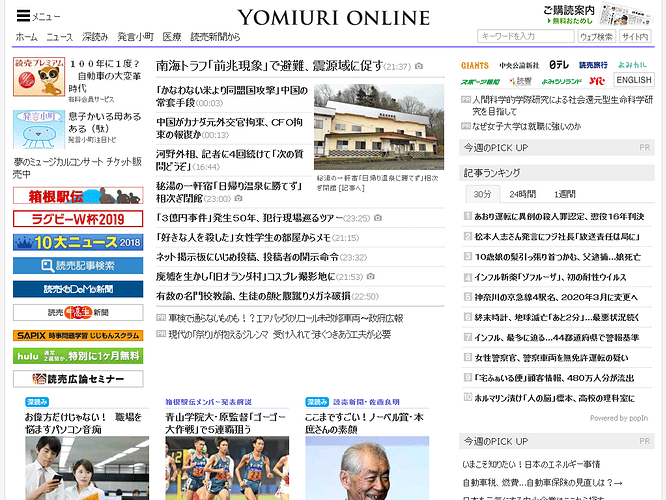Yea but it was confusing as hell.
I can’t argue with that. ![]() For a beginner textbook, I wouldn’t use it for sure.
For a beginner textbook, I wouldn’t use it for sure.
Oh, I just saw that while I was writing, you basically posted the same information 2 minutes before me. :'D
Actually, I think romaji that way makes a ton of sense. Eventually, you’ll need to understand 五十音図、where the kana are listed in a grid, with five vowels across and ten consonants down. You need this, for instance, when looking for something in an sorted list (or for sorting a list yourself). One of the rows is さ、し、す、せ、そ (sa, si, su, se, so).
Coincidentally, Japan is the only country in the world where Geocities is still alive…
It’s not as intuitive. For a beginner, ocha is much easier to understand than otya; and shoujyo is easier than syouzyo. It’s not a good beginner’s book for people coming from an English speaking background in my opinion.
I mean, I didn’t like it at the time, but now I actually fairly prefer si tu du ti etc, especially for typing.
I do still tend toward sha/cha (and other sh/ch compounds) though.
If anyone is feeling nostalgic, I have a copy of “Japanese for Busy People” with the accompanying cassette tapes!
As a middle schooler in the 90s, I tried to teach myself. There were classes at the community college but at the time the demand was very high and the wait list was years long. My dad found some computer software that was basically a really beta version of Duolingo. I was able to read hiragana/katakana this way but had absolutely no idea how to write it properly. Also picked up some basic grammar and vocab, but beyond that I struggled to progress until I was able to take some courses in college and found better Internet resources.
Oh yeh, mine had loads of Romaji in them too! Also the part where it tried to explain Kunyomi and Onyomi was hopeless, it was just like ‘Onyomi is the Chinese reading, and Kunyomi is the Japanese reading!’ which left me very confused.
I had a similar experience. The book I got was awful. It focused on phrases, rather than learning grammar and was in romaji. I ended up moving to take Japanese classes because the schools near me didn’t offer Japanese classes. My first semester we used one book and learned kana. My second semester they switched to Genki and I was told I should have learned some Kanji in Japanese 1. At my university we had a Japanese tutor that I started going to, not because I needed help, but because a class friend said I should go. She was a really kind Japanese native. Basically I was going so she could keep her position. It was mostly awkward because I didn’t need much help at the time so she would go over whatever she wanted. Sometimes we would talk about Japan and her family. She would give me snacks sometimes. Overall it was really nice. Unfortunately they did get rid of her. When I did need her she wasn’t there to help and they didn’t get a replacement.
As for studying Kanji and vocab…for vocab I would buy index cards and make flash cards (I actually still have some that I’ve been throwing away after I learn). For Kanji I would write them a few times in class, we would have a test and then I eventually got some Kanji flash card sets to review. I was still using the flash card set until I switched to WaniKani. Now that I’m starting to see new Kanji I plan to use them again to re-enforce what I’m learning in WaniKani.
they would’ve been taught by someone who knew it
Ha! I was in the same boat. ![]() Neopets FTW!
Neopets FTW!
I was lucky enough that my high school had Japanese, so I was able to learn it there… and then yay for a minor in uni later on! Followed by many many years of not using it ever so a lot has vanished from my brain ![]()
That’s a pretty interesting backstory. What was your original motivation for learning the language?
In France people who were motivated went to Paris and studied at Langues O’, short for Institut national des langues et civilisations orientales. This school was founded just before 1800.
how do you do the fool netflix into allowing japanese subtitles or dub?
I was interested in the food, the history, and films. One day I was at a largish gathering of friends at a birthday party at the Japanese restaurant in Harvard Square. One guy called out “I’m going to take Japanese class at Harvard Extension. Who wants to join me?” I raised my hand, and after that one thing just led to another.
I started learning in the early '80’s at high school, but I went to a specialist language high school (we had students from the university come down to study greek, indonesian and japanese at our school).
Most of my learning materials were created by my teacher, and mimeographed for the the class to use. Ms Homma, thank you forever!
僕は二十六年前に離島に直接米国から移り住んで、全く日本語話せないままでしたが。。。やれば出来る!タットル出版の教科書のお蔭で文法だけでなく単語の語彙をコツコツ身につけて。。。なんとか会話が単語単語から始めました!やてみないと分からない!! I first came to an outer island some 26 years ago and it is amazing what immersion can do! Leave the TV on NHK in the background. But I didn’t know any Japanese but had a degree with a major in a western foreign language, so motivation and need was very high and Tuttle Publishing was a godsend!
One of the main ways to learn in the past was to have lessons given to you by someone who knew how to do it. It was more personal, but often more expensive. You either paid with cash or with labour.
If you wanted to learn how to become a carpenter you’d need to become an apprentice under an established carpenter. Now you can get all the knowledge from Youtube.
Language is the same, now you can get a very similar experience online as compared to a real japanese speaking teacher.
But, it still stands, the real thing is always better. But more expensive, and often harder to come by.
Where I live is not very big or multicultural, I’ve only ever seen 2 Japanese people in the wild locally, and they were two old Japanese men speaking to each other in Japanese as they waited their turn at bowls. (A very British Lawn Sport)
It was very shocking to see.



